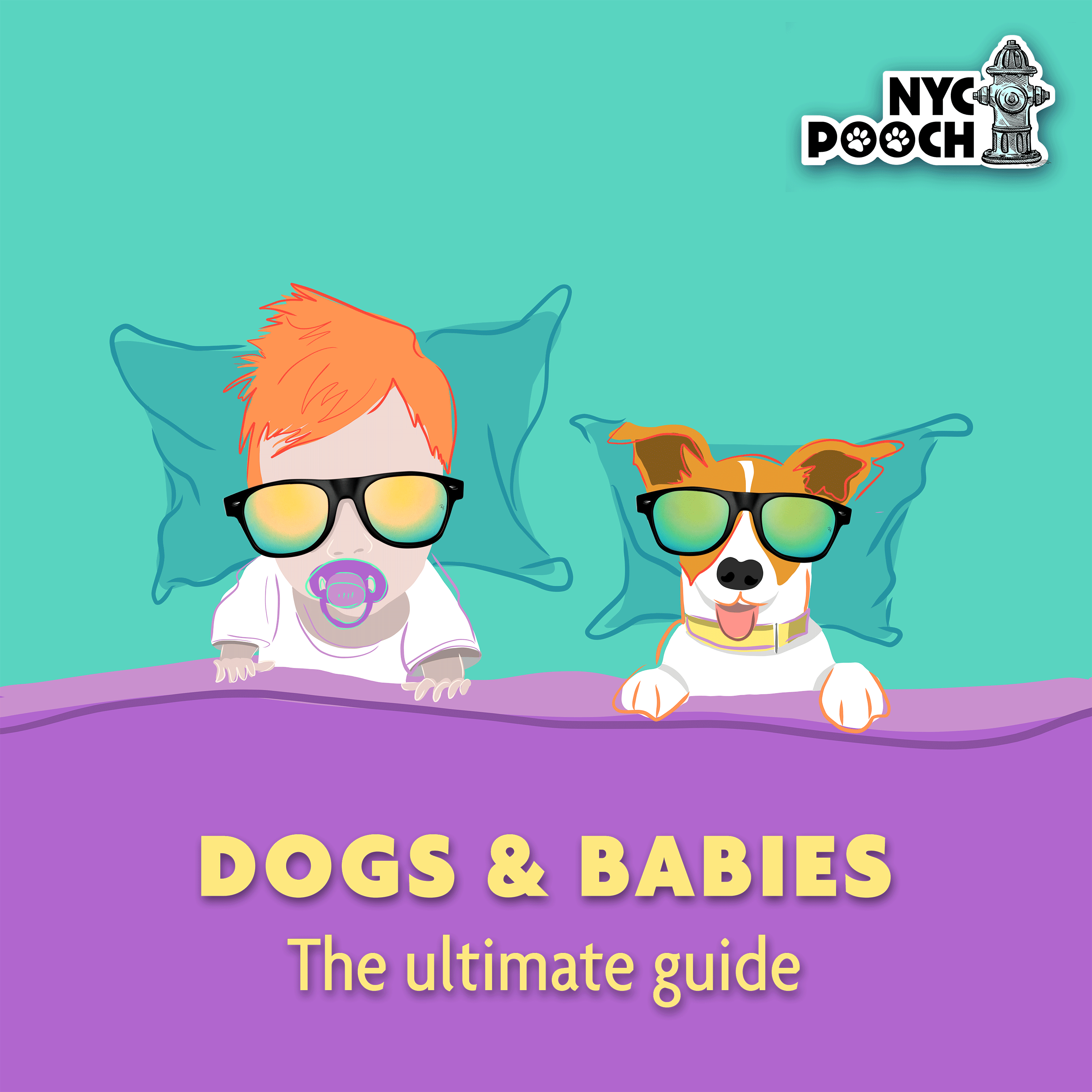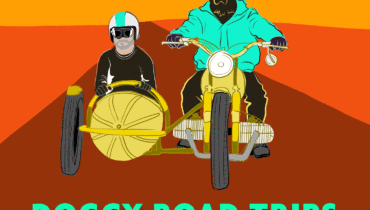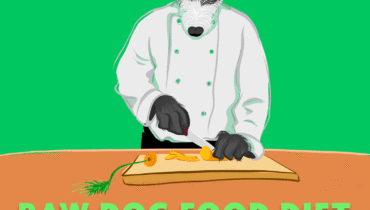How to Prepare Your Dog for a Baby
By Dan Shemetoff
This is it. The moment you’ve been waiting for. You are going to introduce the two loves of your life: your dog and your newborn (human) baby. And it’s going to go perfectly. Or is it?
There are lots of things that can go wrong when introducing a newborn to a household…and the potential pitfalls remain as the baby grows and changes. Lucky for you, I’m here to help you plan ahead and think about prevention and management now–before you’re covered in breast milk and hallucinating from sleep deprivation. Because, let’s face it, your capacity for handling just one more thing when you have no idea what day it is or when you last showered is going to be low to nil (note: if you’re reading this article in that state, it’s okay. There’s no judgment. You’re among friends here. Just take a deep breath, and let’s do this together, new parent).
There’s a lot of info in this article, but it really just comes down prevention. It’s that simple. Sure, accidents do happen, but most of them are preventable with effort. And that’s why you’re reading this Ultimate Guide to Introducing Your Dog to Your Newborn. So let’s get to it.
Before the birth
Visit the vet
Take your dog for his annual exam to make sure everything is looking good and he’s healthy. Having a sick or hurt dog while trying to introduce a new baby into the house adds a layer you don’t even want to deal with. Plus, it might be awhile until you can focus on your pup like you used to, so it’s best to get him a complete once over and refill any meds he is on.
Set things up
Does anyone else hate the term “nesting”? I mean, I just can’t use it and keep a straight face. So instead, I recommend assembling and organizing baby’s space and stuff so your dog has plenty of time to get used to it. Also–as someone whose baby came three weeks early, I can tell you that getting things set up early could pay off in more ways than one.
Decide if you’re going to allow your dog into the baby’s room
Then start acting accordingly so your dog can get used to it. *Note: if you decide to allow your dog in, it should only be with supervision. NEVER leave your baby and dog alone.
Fill the toybox
I’m not talking about the baby’s toys; all of your relatives and friends and neighbors and relatives’ neighbors will more than take care of that–TRUST. No, I’m talking about stocking up your dog’s toy supply with a bunch of new goodies. Make sure you have a selection of old faves and some new surprises. Also, if your dogs are like mine, they think anything soft and plushy is theirs, so get a bunch of new stuffed toys so when they accidentally grab the baby’s, you can easily make a swap. You should also add some smart toys to the inventory.
This will keep your pup busy and stimulated during a time when you may not be as available to provide it directly.
Get all hands on deck
You will most likely need some help when you’re in the hospital. Identify someone who can walk, care for, and spend time with your dog when needed–ahead of time! You may have to ask a couple of people since you don’t know when for sure the little human will come. Make sure you leave them with good complete notes and care instructions. You may even find that you want a doggie helper after you’re home to assist with feeding, walking, or just simply spending time giving attention to a confused dog.
Preserve your dog’s safe space
Make sure your dog’s bed/crate/space is still preserved and that they can get to it freely whenever they need to escape. The baby should never be allowed there.
Introduce new sights and sounds early
A lot of people tell you to have someone bring home a blanket or something to the dog while you guys are still at the hospital, but the way things go for most people, you aren’t there long enough anyway. So I wouldn’t worry about/count too much on that. Instead, focus on the weeks and months leading up to the birth. Some dogs may need pre-exposure or practice with baby things, like diapers, blankets, toys, or even videos/audio of baby sounds. Anything you can do to expose your dog to the new stimuli ahead of time to desensitize them will help a lot.
The Day of the Introduction
- ALWAYS supervise/NEVER leave a baby and dog alone at any age or time. Commit to this. Almost all accidents occur when babies/children and dogs are left unattended. No matter how good your dog or baby is, they do not have full free will and control. They need you to ensure their safety.
- Remember to go slowly and keep expectations low. Do not rush anything. There is plenty of time for a proper introduction. If you rush it, you run the risk of setting a bad foundation that may be difficult or impossible to overcome. Just take your time
- Throughout the process, stay calm and happy, as normal–no matter how tired or stressed you may be. Remember that dogs respond to your energy, and if they sense tension or anger, they will associate that with the baby.
- Before you arrive home with your baby, have someone tire the dog out with a hike, a jog, or some time at doggy daycare.
- When you first arrive home, enter your house and greet the dog alone without the baby for the first few minutes. Have your partner, friend, or family member wait with the baby in the car or outside.
- Put your dog on a leash at first and let someone who is experienced else hold him during the first minutes or hours.
- Always allow the dog to make his own choice to approach the baby. Don’t ever force the dog towards the baby, and don’t bring the baby to the dog. This isn’t an arranged marriage.
- Let the dog sniff the baby, but not the baby’s face. Don’t let them go face to face.
- Don’t scold your dog for being curious. Never punish the dog in association with the baby because it can set up a power dynamic of rivalry. Instead, focus on praising and rewarding the good behavior and don’t put the dog into a situation that could cause him to fail in behavior.*
- If you have multiple dogs, make sure you introduce them one at a time.
- Be sure to brush up so you understand your dog’s different non-verbal stress cues and languages. Know what your dog is telling you with their pants, growls, eye movement, body posture, etc.
- Note: you don’t have to do the introduction on the first day your baby is home. If you don’t think the baby or dog is ready day one, you can keep them separated or at a distance from each other as the dog gets used to the new sounds, smells, and sights. After a day or two, you can try the intro.
*If there is any sign of aggression, keep the dog and baby separated and contact a behaviorist. It might be a good idea to do research ahead of time so you know which one/s to contact and don’t have to research under stress.
Tips for Ongoing Harmony
- Always keep an adult between dog and baby, and keep baby elevated slightly. Be ready to remove baby quickly if an emergency situation arises. Don’t let them play together alone, or pose them together for a photo or anything like that. Always have an adult between them. ALWAYS.
- Spend time with your dog without the baby daily.
- Maintain your dog’s routine as much as possible. Get extra help if needed (like a friend or dog walker)
- Stay in tune with what your dog is trying to communicate
- Include the dog in the activities whenever possible – such as taking family walks, hikes, and going on outings together.
- Develop as many positive associations as possible. Offer your dog treats during new or stressful baby-oriented stimuli and happenings.
- As the baby grows and becomes more mobile, the challenges increase, so start on day one to educate your baby. Model positive, proper interaction with the dog. Talk to your baby and tell him what you’re doing: “see how we pet Delilah nicely? We always treat our dogs kindly.” Call the dog to you versus approaching the dog with the baby to teach your baby never to chase the dog. Managing the behavior of older babies, toddlers, and children around dogs is crucial and full of specific dos and do nots, but that’s a whole different article.
It can be hard work to keep everyone safe and happy, but with a little humility (let go of the “it can’t happen to me” mentality) and planning, you can help your baby and dog forge a lifelong love affair.



